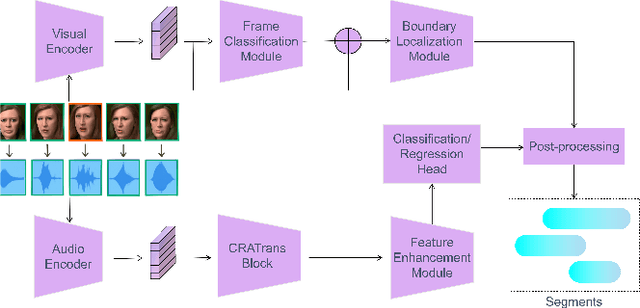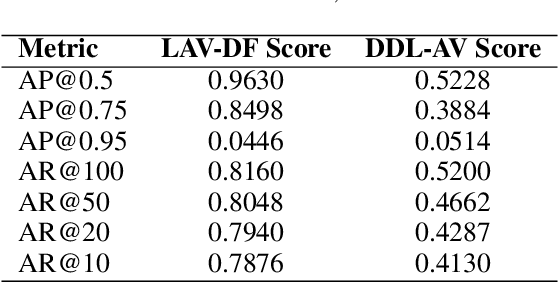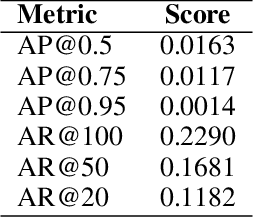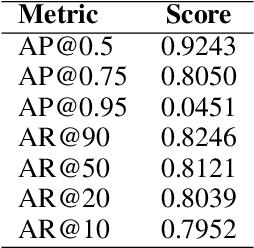Xu Yang
CoT Vectors: Transferring and Probing the Reasoning Mechanisms of LLMs
Oct 01, 2025Abstract:Chain-of-Thought (CoT) prompting has emerged as a powerful approach to enhancing the reasoning capabilities of Large Language Models (LLMs). However, existing implementations, such as in-context learning and fine-tuning, remain costly and inefficient. To improve CoT reasoning at a lower cost, and inspired by the task vector paradigm, we introduce CoT Vectors, compact representations that encode task-general, multi-step reasoning knowledge. Through experiments with Extracted CoT Vectors, we observe pronounced layer-wise instability, manifesting as a U-shaped performance curve that reflects a systematic three-stage reasoning process in LLMs. To address this limitation, we propose Learnable CoT Vectors, optimized under a teacher-student framework to provide more stable and robust guidance. Extensive evaluations across diverse benchmarks and models demonstrate that CoT Vectors not only outperform existing baselines but also achieve performance comparable to parameter-efficient fine-tuning methods, while requiring fewer trainable parameters. Moreover, by treating CoT Vectors as a probe, we uncover how their effectiveness varies due to latent space structure, information density, acquisition mechanisms, and pre-training differences, offering new insights into the functional organization of multi-step reasoning in LLMs. The source code will be released.
Towards Understanding Feature Learning in Parameter Transfer
Sep 26, 2025Abstract:Parameter transfer is a central paradigm in transfer learning, enabling knowledge reuse across tasks and domains by sharing model parameters between upstream and downstream models. However, when only a subset of parameters from the upstream model is transferred to the downstream model, there remains a lack of theoretical understanding of the conditions under which such partial parameter reuse is beneficial and of the factors that govern its effectiveness. To address this gap, we analyze a setting in which both the upstream and downstream models are ReLU convolutional neural networks (CNNs). Within this theoretical framework, we characterize how the inherited parameters act as carriers of universal knowledge and identify key factors that amplify their beneficial impact on the target task. Furthermore, our analysis provides insight into why, in certain cases, transferring parameters can lead to lower test accuracy on the target task than training a new model from scratch. Numerical experiments and real-world data experiments are conducted to empirically validate our theoretical findings.
Adversarial Graph Fusion for Incomplete Multi-view Semi-supervised Learning with Tensorial Imputation
Sep 19, 2025Abstract:View missing remains a significant challenge in graph-based multi-view semi-supervised learning, hindering their real-world applications. To address this issue, traditional methods introduce a missing indicator matrix and focus on mining partial structure among existing samples in each view for label propagation (LP). However, we argue that these disregarded missing samples sometimes induce discontinuous local structures, i.e., sub-clusters, breaking the fundamental smoothness assumption in LP. Consequently, such a Sub-Cluster Problem (SCP) would distort graph fusion and degrade classification performance. To alleviate SCP, we propose a novel incomplete multi-view semi-supervised learning method, termed AGF-TI. Firstly, we design an adversarial graph fusion scheme to learn a robust consensus graph against the distorted local structure through a min-max framework. By stacking all similarity matrices into a tensor, we further recover the incomplete structure from the high-order consistency information based on the low-rank tensor learning. Additionally, the anchor-based strategy is incorporated to reduce the computational complexity. An efficient alternative optimization algorithm combining a reduced gradient descent method is developed to solve the formulated objective, with theoretical convergence. Extensive experimental results on various datasets validate the superiority of our proposed AGF-TI as compared to state-of-the-art methods. Code is available at https://github.com/ZhangqiJiang07/AGF_TI.
Large Language Model-assisted Meta-optimizer for Automated Design of Constrained Evolutionary Algorithm
Sep 16, 2025Abstract:Meta-black-box optimization has been significantly advanced through the use of large language models (LLMs), yet in fancy on constrained evolutionary optimization. In this work, AwesomeDE is proposed that leverages LLMs as the strategy of meta-optimizer to generate update rules for constrained evolutionary algorithm without human intervention. On the meanwhile, $RTO^2H$ framework is introduced for standardize prompt design of LLMs. The meta-optimizer is trained on a diverse set of constrained optimization problems. Key components, including prompt design and iterative refinement, are systematically analyzed to determine their impact on design quality. Experimental results demonstrate that the proposed approach outperforms existing methods in terms of computational efficiency and solution accuracy. Furthermore, AwesomeDE is shown to generalize well across distinct problem domains, suggesting its potential for broad applicability. This research contributes to the field by providing a scalable and data-driven methodology for automated constrained algorithm design, while also highlighting limitations and directions for future work.
SoccerNet 2025 Challenges Results
Aug 26, 2025Abstract:The SoccerNet 2025 Challenges mark the fifth annual edition of the SoccerNet open benchmarking effort, dedicated to advancing computer vision research in football video understanding. This year's challenges span four vision-based tasks: (1) Team Ball Action Spotting, focused on detecting ball-related actions in football broadcasts and assigning actions to teams; (2) Monocular Depth Estimation, targeting the recovery of scene geometry from single-camera broadcast clips through relative depth estimation for each pixel; (3) Multi-View Foul Recognition, requiring the analysis of multiple synchronized camera views to classify fouls and their severity; and (4) Game State Reconstruction, aimed at localizing and identifying all players from a broadcast video to reconstruct the game state on a 2D top-view of the field. Across all tasks, participants were provided with large-scale annotated datasets, unified evaluation protocols, and strong baselines as starting points. This report presents the results of each challenge, highlights the top-performing solutions, and provides insights into the progress made by the community. The SoccerNet Challenges continue to serve as a driving force for reproducible, open research at the intersection of computer vision, artificial intelligence, and sports. Detailed information about the tasks, challenges, and leaderboards can be found at https://www.soccer-net.org, with baselines and development kits available at https://github.com/SoccerNet.
ERF-BA-TFD+: A Multimodal Model for Audio-Visual Deepfake Detection
Aug 24, 2025



Abstract:Deepfake detection is a critical task in identifying manipulated multimedia content. In real-world scenarios, deepfake content can manifest across multiple modalities, including audio and video. To address this challenge, we present ERF-BA-TFD+, a novel multimodal deepfake detection model that combines enhanced receptive field (ERF) and audio-visual fusion. Our model processes both audio and video features simultaneously, leveraging their complementary information to improve detection accuracy and robustness. The key innovation of ERF-BA-TFD+ lies in its ability to model long-range dependencies within the audio-visual input, allowing it to better capture subtle discrepancies between real and fake content. In our experiments, we evaluate ERF-BA-TFD+ on the DDL-AV dataset, which consists of both segmented and full-length video clips. Unlike previous benchmarks, which focused primarily on isolated segments, the DDL-AV dataset allows us to assess the model's performance in a more comprehensive and realistic setting. Our method achieves state-of-the-art results on this dataset, outperforming existing techniques in terms of both accuracy and processing speed. The ERF-BA-TFD+ model demonstrated its effectiveness in the "Workshop on Deepfake Detection, Localization, and Interpretability," Track 2: Audio-Visual Detection and Localization (DDL-AV), and won first place in this competition.
On the Generalization of SFT: A Reinforcement Learning Perspective with Reward Rectification
Aug 07, 2025Abstract:We present a simple yet theoretically motivated improvement to Supervised Fine-Tuning (SFT) for the Large Language Model (LLM), addressing its limited generalization compared to reinforcement learning (RL). Through mathematical analysis, we reveal that standard SFT gradients implicitly encode a problematic reward structure that may severely restrict the generalization capabilities of model. To rectify this, we propose Dynamic Fine-Tuning (DFT), stabilizing gradient updates for each token by dynamically rescaling the objective function with the probability of this token. Remarkably, this single-line code change significantly outperforms standard SFT across multiple challenging benchmarks and base models, demonstrating greatly improved generalization. Additionally, our approach shows competitive results in offline RL settings, offering an effective yet simpler alternative. This work bridges theoretical insight and practical solutions, substantially advancing SFT performance. The code will be available at https://github.com/yongliang-wu/DFT.
Democratizing High-Fidelity Co-Speech Gesture Video Generation
Jul 09, 2025Abstract:Co-speech gesture video generation aims to synthesize realistic, audio-aligned videos of speakers, complete with synchronized facial expressions and body gestures. This task presents challenges due to the significant one-to-many mapping between audio and visual content, further complicated by the scarcity of large-scale public datasets and high computational demands. We propose a lightweight framework that utilizes 2D full-body skeletons as an efficient auxiliary condition to bridge audio signals with visual outputs. Our approach introduces a diffusion model conditioned on fine-grained audio segments and a skeleton extracted from the speaker's reference image, predicting skeletal motions through skeleton-audio feature fusion to ensure strict audio coordination and body shape consistency. The generated skeletons are then fed into an off-the-shelf human video generation model with the speaker's reference image to synthesize high-fidelity videos. To democratize research, we present CSG-405-the first public dataset with 405 hours of high-resolution videos across 71 speech types, annotated with 2D skeletons and diverse speaker demographics. Experiments show that our method exceeds state-of-the-art approaches in visual quality and synchronization while generalizing across speakers and contexts.
Reasoning or Not? A Comprehensive Evaluation of Reasoning LLMs for Dialogue Summarization
Jul 02, 2025Abstract:Dialogue summarization is a challenging task with significant practical value in customer service, meeting analysis, and conversational AI. Although large language models (LLMs) have achieved substantial progress in summarization tasks, the performance of step-by-step reasoning architectures-specifically Long Chain-of-Thought (CoT) implementations such as OpenAI-o1 and DeepSeek-R1-remains unexplored for dialogue scenarios requiring concurrent abstraction and conciseness. In this work, we present the first comprehensive and systematic evaluation of state-of-the-art reasoning LLMs and non-reasoning LLMs across three major paradigms-generic, role-oriented, and query-oriented dialogue summarization. Our study spans diverse languages, domains, and summary lengths, leveraging strong benchmarks (SAMSum, DialogSum, CSDS, and QMSum) and advanced evaluation protocols that include both LLM-based automatic metrics and human-inspired criteria. Contrary to trends in other reasoning-intensive tasks, our findings show that explicit stepwise reasoning does not consistently improve dialogue summarization quality. Instead, reasoning LLMs are often prone to verbosity, factual inconsistencies, and less concise summaries compared to their non-reasoning counterparts. Through scenario-specific analyses and detailed case studies, we further identify when and why explicit reasoning may fail to benefit-or even hinder-summarization in complex dialogue contexts. Our work provides new insights into the limitations of current reasoning LLMs and highlights the need for targeted modeling and evaluation strategies for real-world dialogue summarization.
Hierarchical Image Matching for UAV Absolute Visual Localization via Semantic and Structural Constraints
Jun 11, 2025Abstract:Absolute localization, aiming to determine an agent's location with respect to a global reference, is crucial for unmanned aerial vehicles (UAVs) in various applications, but it becomes challenging when global navigation satellite system (GNSS) signals are unavailable. Vision-based absolute localization methods, which locate the current view of the UAV in a reference satellite map to estimate its position, have become popular in GNSS-denied scenarios. However, existing methods mostly rely on traditional and low-level image matching, suffering from difficulties due to significant differences introduced by cross-source discrepancies and temporal variations. To overcome these limitations, in this paper, we introduce a hierarchical cross-source image matching method designed for UAV absolute localization, which integrates a semantic-aware and structure-constrained coarse matching module with a lightweight fine-grained matching module. Specifically, in the coarse matching module, semantic features derived from a vision foundation model first establish region-level correspondences under semantic and structural constraints. Then, the fine-grained matching module is applied to extract fine features and establish pixel-level correspondences. Building upon this, a UAV absolute visual localization pipeline is constructed without any reliance on relative localization techniques, mainly by employing an image retrieval module before the proposed hierarchical image matching modules. Experimental evaluations on public benchmark datasets and a newly introduced CS-UAV dataset demonstrate superior accuracy and robustness of the proposed method under various challenging conditions, confirming its effectiveness.
 Add to Chrome
Add to Chrome Add to Firefox
Add to Firefox Add to Edge
Add to Edge